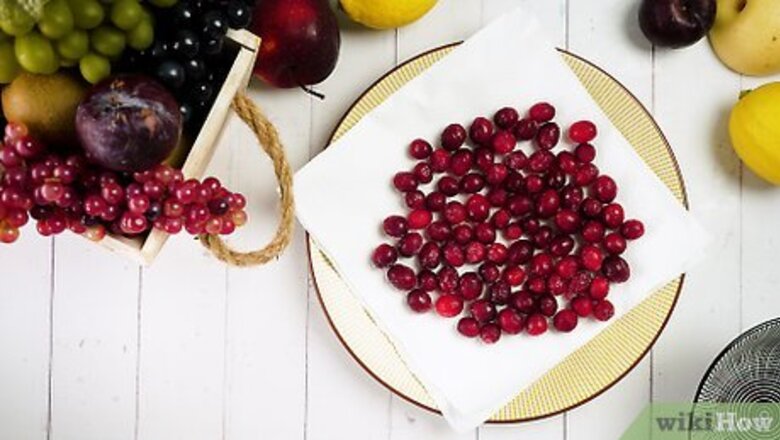
views
- Spread your fruit on a plate lined with a paper towel, then microwave it in 30-second bursts until it's thawed.
- Place the frozen fruit in a plastic bag, then place the plastic bag in a bowl of cold water for 2 hours.
- Leave your frozen fruit in a refrigerator set to 40 °F (4 °C) for 6-8 hours.
Thawing in the Microwave
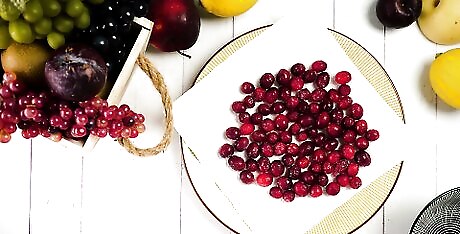
Spread the fruit out on a paper towel-lined plate. First, line a plate with clean paper towels. Then, use a spoon or fork to spread the fruit out on top of the paper towels as much as possible. It’s okay if some of the fruit is touching or frozen together, but make sure it’s spread out in a single layer.
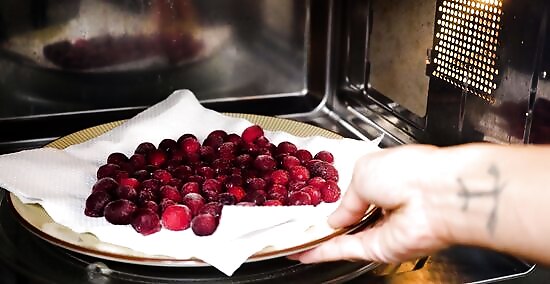
Microwave the fruit on the defrost setting for 30 seconds to 2 minutes. Place the fruit in the microwave and set it in the defrost setting. Then, set the timer for no more than 30 seconds for smaller fruit, such as blueberries, to make sure the fruit doesn’t overcook. For larger fruit, such as a frozen banana, set the timer for about 2 minutes. If your microwave doesn’t have a defrost setting, you can also use the 50% power setting. This will ensure that the outside of fruit doesn’t start to cook will the inside is still frozen.
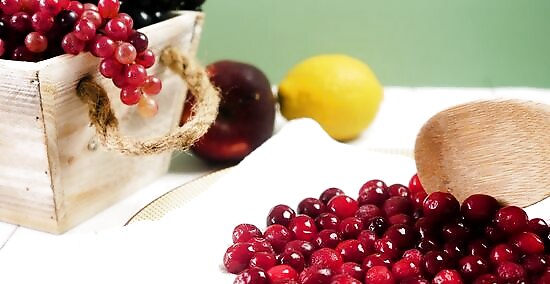
Check if the fruit is equally thawed across the plate. Before microwaving the fruit any longer, open the microwave door and check to see if the fruit is done defrosting or needs to be stirred. If some of the fruit is partially thawed while other sections are still frozen, use a spoon to stir it up so it defrosts more evenly. Because frozen fruit tends to defrost unevenly in the microwave, remove any pieces that are done before defrosting the rest for more time. Strawberries, for example, tend to defrost unevenly because they come in a wide variety of sizes. Therefore, some of the smaller strawberries may be done after 30 seconds, while larger ones may need more time in the microwave. Make sure that you use a spoon or fork when handling the fruit, as using your hands can cause bacteria to transfer.
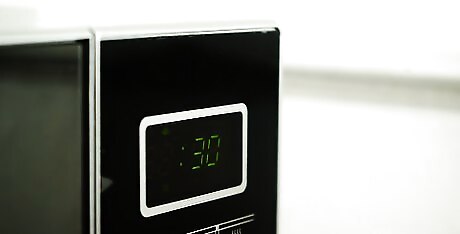
Defrost the fruit for another 30 seconds. If some or all of the fruit isn’t done defrosting yet, put it back in the microwave for another 30 seconds. Make sure that you reset it to the defrost setting before pressing the “start” button. If the fruit still isn’t defrosted, add more time on the microwave and cook as needed until it’s completely thawed.
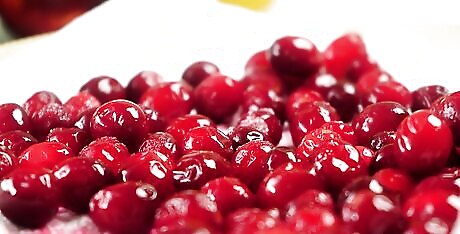
Remove the fruit from the plate and use it immediately. Once the fruit is completely thawed, use a spoon or fork to remove it from the hot plate. Serve the fruit immediately so bacteria doesn’t have time to grow or spread. Try mixing your thawed fruit into yogurt or oatmeal or baking it into a pie.
Using Cold Water to Defrost

Transfer the frozen fruit into a sealed plastic baggie if necessary. First, measure out how much frozen fruit you need. Use a measuring cup or spoon to transfer it into a sealable plastic baggie. Then, seal the baggie tightly to keep any water or air from getting in. Allowing any air or water into the baggie while the fruit defrosts could introduce bacteria. Therefore, it’s important that you seal it tightly. If the fruit is already in a plastic baggie, you can skip this step.
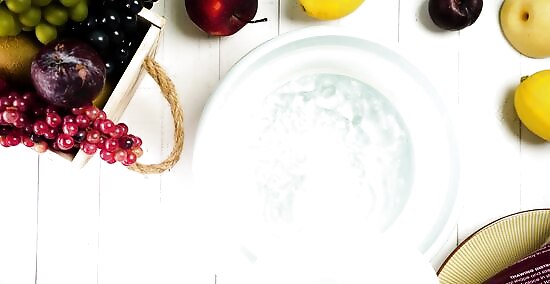
Fill a large bowl with cold water. First, turn on the cold water in the sink and let it run for a few seconds to cool down. Then, fill a large bowl with the cold water, leaving about 2 inches (5.1 cm) at the top so it doesn’t spill over when you add the fruit. The water temp must be less than 70 °F (21 °C) to ensure that bacteria won’t start to spread or grow.
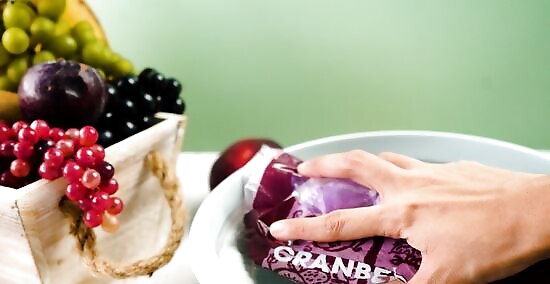
Place the fruit baggie in the bowl. Dunk the baggie under water to submerge it under water as much as possible. This will help to ensure that the fruit thaws as evenly as possible.
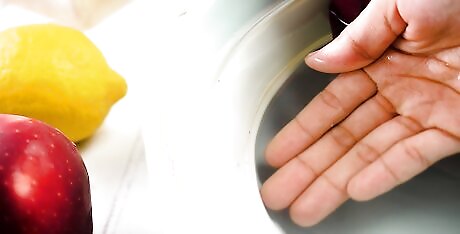
Change out the cold water and check on the fruit every 30 minutes. To make sure that the water stays cold so the fruit won’t grow bacteria as it defrosts, remove the fruit from the bowl every 30 minutes and drain the water. As you change the water, press down on a piece of the fruit with a spoon to see if it’s done thawing. If the fruit is still frozen, refill the bowl with cold water and return the fruit baggie into the water as quickly as you can. Smaller fruit, such as blackberries, raspberries, and blueberries, will likely thaw quicker than larger, more dense fruit, such as apples or peaches. Checking the fruit when you change the water will let you know as soon as it’s done defrosting so you can use it immediately or transfer it to the refrigerator.
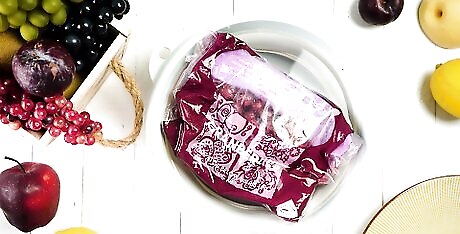
Let the fruit defrost for up to 2 hours. If your fruit was frozen with any added sweeteners, such as sugar or syrup, it’ll likely thaw within 30 minutes to 1 hour. If the fruit was frozen without sweeteners, it may take a bit longer. Regardless, however, the fruit should thaw in less than 2 hours.
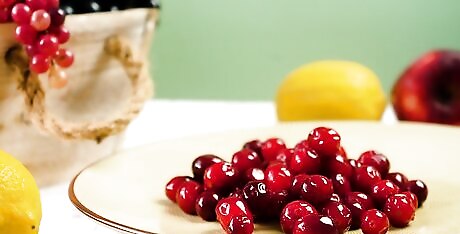
Remove the fruit from the baggie to serve or use as desired. Once the fruit is soft to the touch, remove it from the plastic baggie. Eat your defrosted fruit raw or enjoy it with yogurt or topped with powdered sugar. While frozen fruit that’s defrosted in the microwave needs to be consumed or cooked immediately, fruit defrosted in cold water doesn’t get as warm. Therefore, you can enjoy your thawed fruit immediately or store it in the refrigerator for up to 1 day.
Defrosting Fruit in the Refrigerator

Set your refrigerator temperature to 40 °F (4 °C) or below. Before defrosting fruit in the refrigerator, it’s important that you check the thermometer to make sure your refrigerator temperature is set at 40 °F (4 °C) or below to keep the fruit from getting too warm and risk growing bacteria. If your refrigerator temperature is set above 40 °F (4 °C), use the dial or arrows to adjust it so the fruit will defrost at a safe temperature. In most cases, the refrigerator thermometer is located at the top of the inside of the refrigerator. If this is not the case for your refrigerator, check the manual to see where it might be located.

Transfer the frozen fruit package into the refrigerator. Once it’s set to a safe temperature, you can transfer the frozen fruit into the refrigerator to thaw. You can thaw the fruit in its package if you need all of the fruit, or measure out how much you need in a sealable plastic baggie and place it in the refrigerator. Thawing the fruit in a plastic baggie will keep it protected as it defrosts.
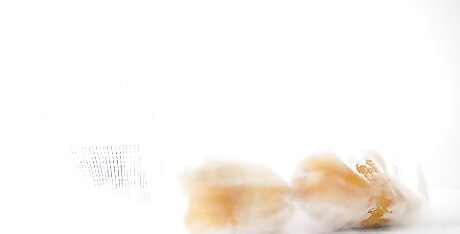
Leave the fruit to defrost for 6 to 8 hours per 1 pound (0.45 kg). In most cases, packaged fruit takes about 6 to 8 hours per 1 pound (0.45 kg) to completely thaw in the refrigerator. It can be helpful, though, to start checking the fruit after a few hours if you’re defrosting a small amount to see if it’s done. For example, if you’re only thawing ⁄2 pound (0.23 kg) of small berries, you’ll likely want to check on the berries after 2 to 3 hours to see if they’re done defrosting. Fruit frozen with syrup generally takes longer to defrost than fruit frozen in dry sugar or without any additives.

Remove the fruit from the refrigerator and use it as desired. Once it’s defrosted, you can use the fruit immediately or store it in the refrigerator for up to 1 day. Try pureeing your defrosted fruit to use in puddings, ice cream, or jams, or serve it raw with yogurt and a sprinkle of sugar.




















Comments
0 comment